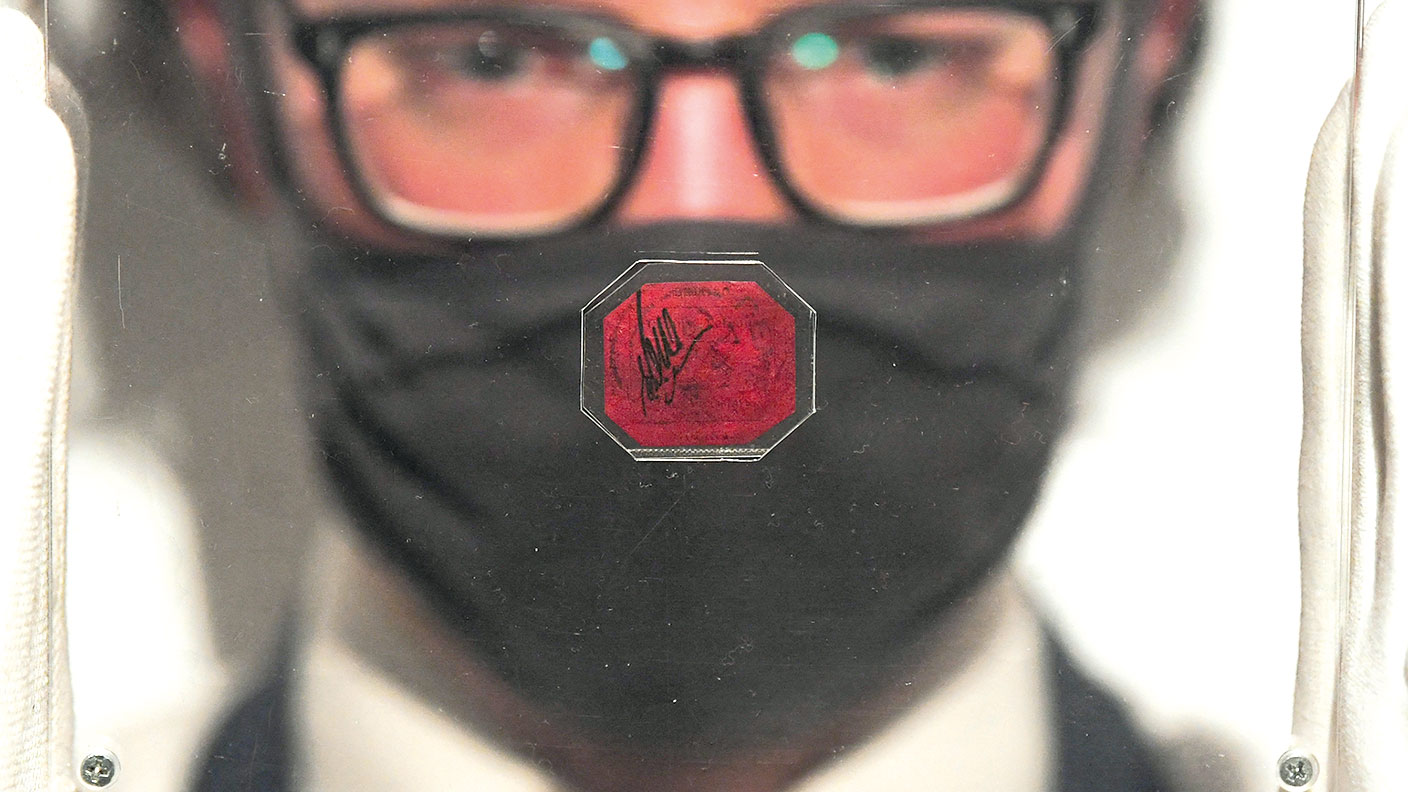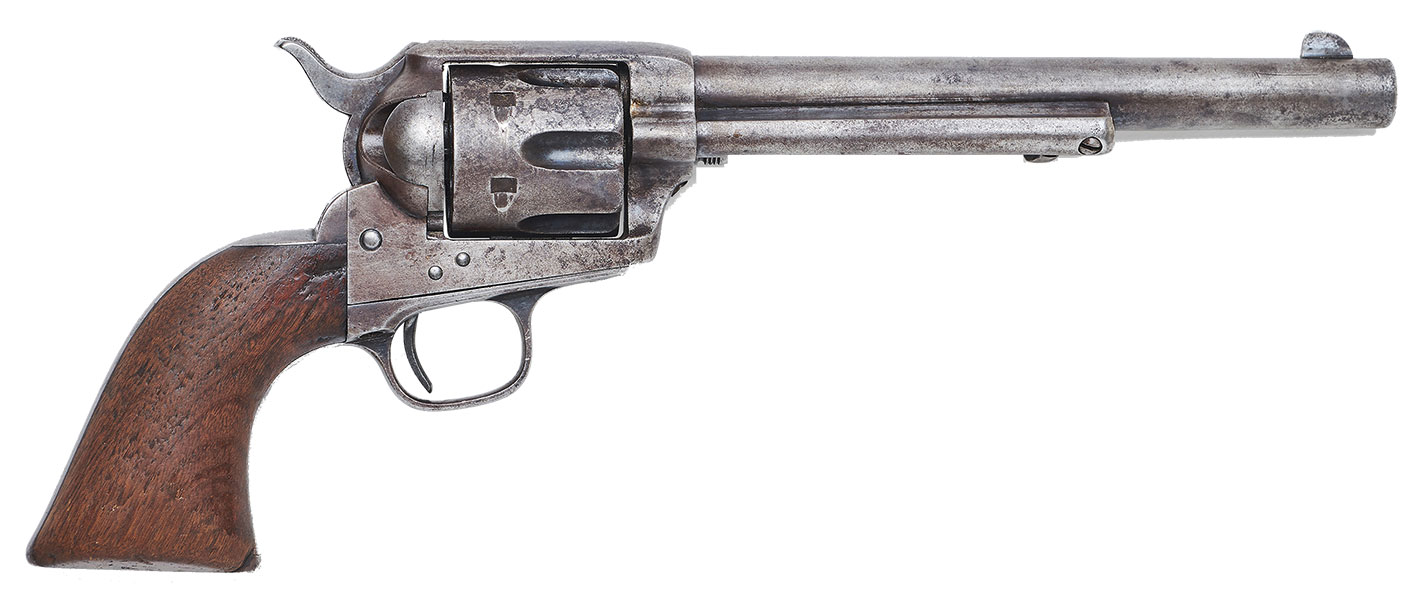Fractional ownership: buy a share of an $8.6m postage stamp
Stanley Gibbons hopes to find a host of buyers for its most prestigious acquisition – an $8.6m British Guiana One-Cent Black on Magenta stamp – through a new fractional ownership scheme. But tread carefully, says Chris Carter.


Most collectors are happy to pursue their hobby knowing they are unlikely to ever lay their hands on a 1933 Double Eagle gold coin or the “inverted Jenny plate block” of stamps from 1918, featuring an aeroplane erroneously flying upside-down, and, according to Sotheby’s, “considered by many to be the most valuable item in United States philately”. The coin sold for $18.9m and the plate block for $4.9m at the same auction held by the auction house in June and both went to buyers with suitably deep pockets.
But that New York sale was titled “Three Treasures” and the third was the British Guiana One-Cent Black on Magenta stamp from 1856. Despite it carrying a $10m lower estimate, British stamp dealer Stanley Gibbons swooped in and snapped it up for $8.3m (£6.1m). The stamp has since arrived in London, where it will go on display in the dealer’s shop on the Strand.
Stamp prices are soaring
Stanley Gibbons now hopes to find a host of buyers for its most prestigious acquisition through a new fractional ownership scheme. Collectors will be able to buy shares conferring legal ownership of the 1c-Magenta, along with voting rights, for a price that has yet to be decided. The total value of the shares will, however, amount to £8m, Patrick Hosking reports in The Times, handing Stanley Gibbons a theoretical £1.9m profit if all the shares were to be sold.
MoneyWeek
Subscribe to MoneyWeek today and get your first six magazine issues absolutely FREE

Sign up to Money Morning
Don't miss the latest investment and personal finances news, market analysis, plus money-saving tips with our free twice-daily newsletter
Don't miss the latest investment and personal finances news, market analysis, plus money-saving tips with our free twice-daily newsletter
The dealer has undertaken to house the stamp in its alarmed, temperature- and humidity-controlled underground vault and says it intends to cover all of the costs of ownership, including insurance. Graham Shircore, Stanley Gibbons’ CEO, puts the total bill of buying and bringing the 1c-Magenta to Britain at around £6.5m.
Should Stanley Gibbons go under (and the loss-making dealer has certainly had a rough time of it of late, with sales falling 18% in the year to the end of March 2021 from the previous 12 months), ownership and voting rights would be “completely unaffected”.
Any resulting sale of the stamp would be at the behest of the shareholders, who no doubt would be hoping to make a tidy profit. That would depend on the market in collectable stamps rising, of course, which, with 64% growth in the decade to 2020, has lagged most other collectable assets, including handbags, classic cars and whisky, according to the Knight Frank Luxury Investment index.
Note, too, that at present there are no plans to create a secondary market for shares in the stamp, so holders would face a challenge if they wanted to sell them. Fractional ownership schemes also smack of the holiday timeshare schemes of the past, which, as Hosking points out, have led to “heavy losses” despite flourishing in asset bubbles. Still, if the allure of 1c-Magenta stamp is too much to resist, prospective buyers can register their interest at 1c-magenta.com.
A brief history of a much-coveted stamp
In 1855, 50,000 postage stamps were due to arrive in British Guiana, Britain’s South American colony, from Britain, according to Stanley Gibbons. Only 5,000 showed up. That posed a problem. If the colony’s letters and newspapers were to be delivered, the local postmaster had to find an alternative. So he asked the local newspaper to print stamps to keep the post moving while more official ones were sent from Britain. A stock of one-cent stamps for newspapers and four-cent stamps for letters were printed, imitating the illustration of a ship and bearing British Guiana’s motto, “We give and we ask in return”. Eventually, the new stamps arrived and the postmaster removed the ersatz stamps from circulation. Most of the one-cent stamps disappeared. One, however, survived.
It was found in 1873 by Vernon Vaughan, a 12-year-old boy living in the colony, among his uncle’s papers. The lad sold it for six shillings and the 1c-Magenta eventually crossed the Atlantic to France via Liverpool, where it ended up in the collection of “eccentric recluse” Philipp von Ferrary. By the time of Ferrary’s death, in 1917, the stamp had acquired some renown. It was sold, in 1922, to Arthur Hind, an American industrialist, who paid around $32,500 for it.
After that, the 1c-Magenta was exhibited around the world, before being sold to “a mysterious Australian businessman” for $45,000 in 1940. The stamp was again sold 30 years later for $280,000, “shattering” the record price for a postage stamp. In 1980, it sold once more, for $935,000, in New York. On 17 June 2014, shoe designer Stuart Weitzman, bought the stamp for almost $9.5m at Sotheby’s in New York. Stanley Gibbons then purchased it in June this year.
Auctions
Going…
The three surviving granddaughters of Al Capone have put up for auction possessions belonging to their grandfather, says Maria Cramer in The New York Times. There is, for instance, a black and white picture of Capone and his mother beaming at each other. Other lots on the Witherell’s auction house website are more in keeping with the violent mob boss’s reputation. His favourite pistol, a 1911 Colt .45, will carry a starting bid of $50,000 on 8 October, but it has already attracted two six-figure offers. Other items include Capone’s platinum and diamond Patek Philippe pocket watch with 90 single-cut diamonds, with bids starting at $12,500.

Gone…
The Colt single-action .44 calibre revolver (pictured) that Sheriff Pat Garrett used in 1881 to kill notorious Wild West outlaw Billy the Kid set a new auction record for a firearm when it sold for $6m with Bonhams in Los Angeles on 27 August – twice its high pre-sale estimate. A pair of flintlock saddle pistols carried by George Washington during the Revolutionary War had set the previous record of nearly $2m in 2002, says Maanya Sachdeva in The Independent. Billy the Kid’s fateful showdown occurred in New Mexico, after the 21-year-old, who was wanted for the murders of eight men, was tracked down to a ranch in New Mexico. The sale of 96 artefacts from a single collection fetched $9m in total.
Get the latest financial news, insights and expert analysis from our award-winning MoneyWeek team, to help you understand what really matters when it comes to your finances.

-
 Leading European companies offer long-term growth
Leading European companies offer long-term growthOpinion Alexander Darwall, lead portfolio manager, European Opportunities Trust, picks three European companies where he'd put his money
-
 How to harness the power of dividends
How to harness the power of dividendsDividends went out of style in the pandemic. It’s great to see them back, says Rupert Hargreaves
-
 Leading European companies offer long-term growth prospects
Leading European companies offer long-term growth prospectsOpinion Alexander Darwall, lead portfolio manager, European Opportunities Trust, picks three European companies where he'd put his money
-
 How to harness the power of dividends
How to harness the power of dividendsDividends went out of style in the pandemic. It’s great to see them back, says Rupert Hargreaves
-
 Why Trustpilot is a stock to watch for exposure to the e-commerce market
Why Trustpilot is a stock to watch for exposure to the e-commerce marketTrustpilot has built a defensible position in one of the most critical areas of the internet: the infrastructure of trust, says Jamie Ward
-
 Tetragon Financial: An exotic investment trust producing stellar returns
Tetragon Financial: An exotic investment trust producing stellar returnsTetragon Financial has performed very well, but it won't appeal to most investors – there are clear reasons for the huge discount, says Rupert Hargreaves
-
 How to capitalise on the pessimism around Britain's stock market
How to capitalise on the pessimism around Britain's stock marketOpinion There was little in the Budget to prop up Britain's stock market, but opportunities are hiding in plain sight. Investors should take advantage while they can
-
 London claims victory in the Brexit wars
London claims victory in the Brexit warsOpinion JPMorgan Chase's decision to build a new headquarters in London is a huge vote of confidence and a sign that the City will remain Europe's key financial hub
-
 Reinventing the high street – how to invest in the retailers driving the change
Reinventing the high street – how to invest in the retailers driving the changeThe high street brands that can make shopping and leisure an enjoyable experience will thrive, says Maryam Cockar
-
 The consequences of the Autumn Budget – and what it means for the UK economy
The consequences of the Autumn Budget – and what it means for the UK economyOpinion A directionless and floundering government has ducked the hard choices at the Autumn Budget, says Simon Wilson